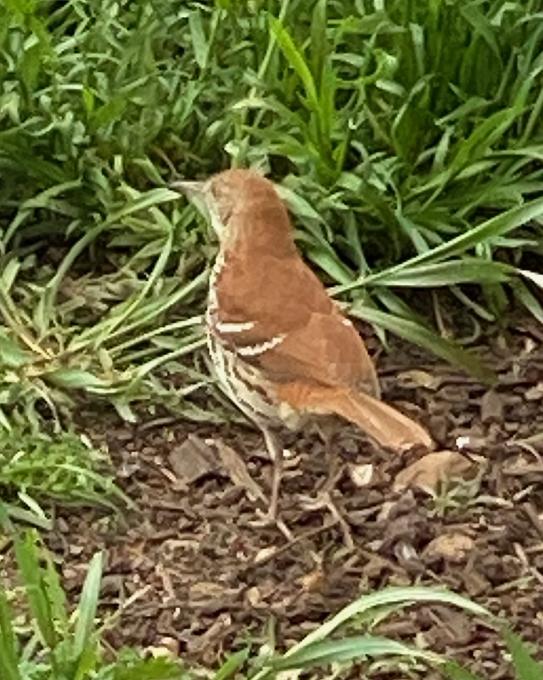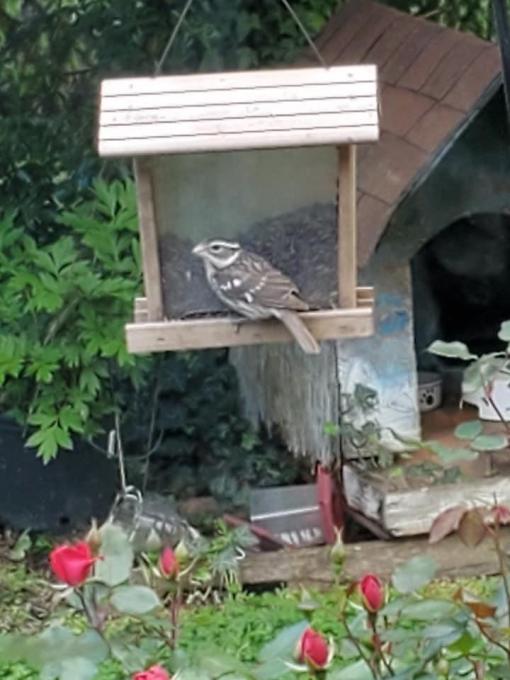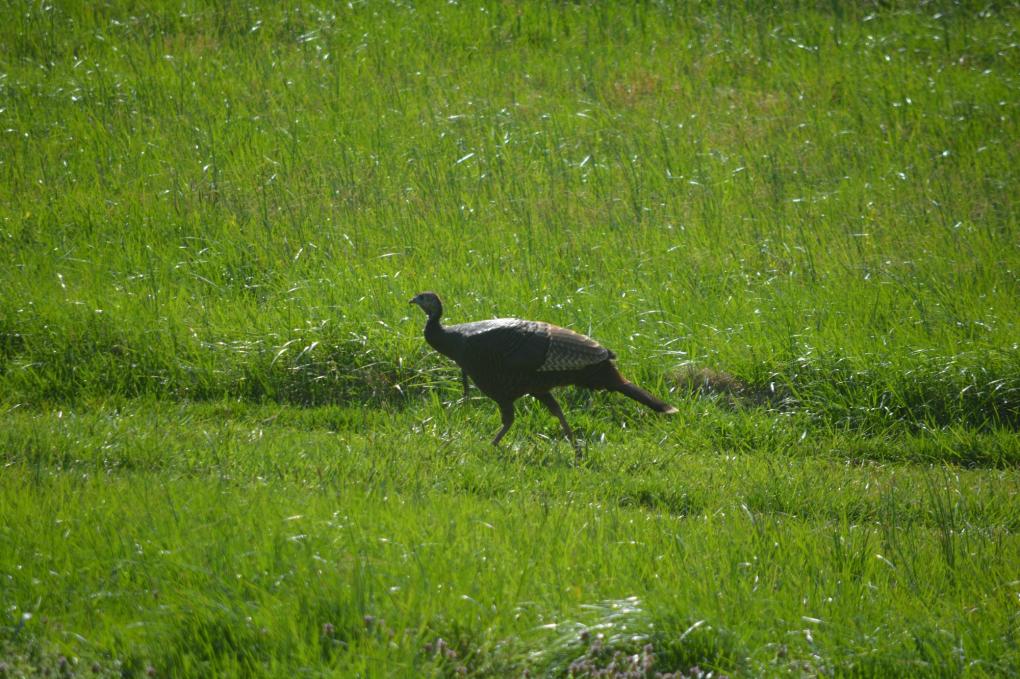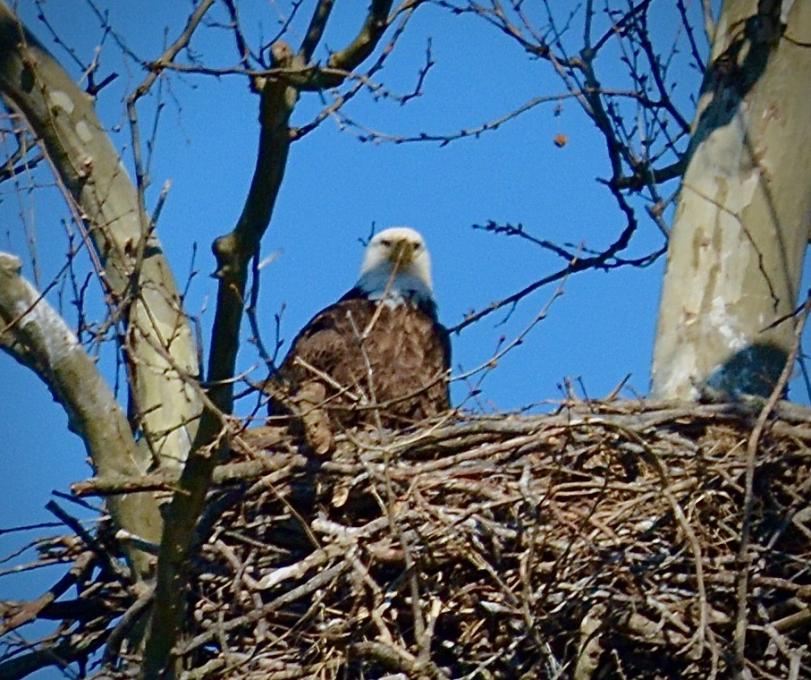STUART
Forum Replies Created
Viewing 8 posts - 1 through 8 (of 8 total)
-
STUARTParticipantActivity 1: Birds as an essential species are special because their existence is up close and personal. That is the science of their contribution to the ecosystem is complemented delightedly in their art form - both sight and sound. Are home is enveloped by these sights and sounds which is pleasant and constant reminder of their importance more so than any species that live here on our farm. This course has only reinforced our observational skills and encouraged us further down the citizen science trail we must stay on. Activity 2: We are reducing or avoiding plastic. We recover waste plastic on our river shore. We observe and report what we see on eBird. We participate in an annual Blue Bird nest watch here in Virginia. We provide feed for are yard birds during harsher months and prior to breeding. Our cats stay inside and enjoy the birds from the windows. We have installed anti collision products on our windows but need to do more here. Activity 3: The most significant losses over my lifetime here on Waterloo Farm has been the reduction of Quail population or "Bobwhite" and the Whippoorwill. A pair of Bobwhite were heard and observed in 2018 but we believe a window birdstrike at our home took one. A single has been back in 2019 and 2020 calling which may have been a mate. We have allowed old hedgerow sites to regenerate in order to support this species but are not seeing the results of yet. The Whippoorwill we thought, was heard around 2015 but not since. This species was my best childhood memory, falling asleep in a non-AC, window open house in the hot summer with this lovely singer calling into the night. A sad loss here. Activity 4: I signed up for the Virginia Breeding Atlas project but have not been a good participant. This course has stimulated me to get more training on how to observe in breeding season including nesting.in reply to: Activities: Helping Birds in Your World #734497
-
STUARTParticipantActivity 1: Northern Cardinal pretty Eastern US centric and stationary year round, Blackburnian Warbler clearly east coast S to N coastal run but appears to hug in to land mass yet possible overwater run along Mexican coast. Western and Scarlet Tanagers appear to hold a clear line of demarkation in South America but live close next door then Western heads up along the coastal land mass while the Scarlet takes a turn east with a large over water pass in the Gulf before spreading out on its approach to Northern America favoring the east. Ruby Throated Hummers spread out on the East but I was interested in the sitings in Florida throughout the winter. Some are at home there. The Sandhill Crane loves the interior CONUS run clearly. The Flycatcher has an interesting pass up and down with what appears to be a long run with no stopover even thought they are over land, or at least no sitings in the day on the ground are reporting. Activity 2: All year: Eastern Towhee is indicated as observed in my region year round but I have not seen one. House Finch is very common and ofter robs our Blue Bird nest boxes. Cedar Waxwing is reported but I will keep searching. Part Year: We are on a water way so many ducks and geese pass our way but I selected the Barn Swallow, frequents our porch with a messy nest and but its aerial performance catching insects over our pasture is incredible. Eastern Whip-poor-will is indicated a here but not widely seen. When I was a child heard it every night in the summer but rarely now. We lost many Northern Bobwhite over the years due to hedgerow removal but not they are returning in low numbers but they are here now in May. Activity 3: The American Goldfinch is an amazing color transition show at our feeder. The covert markings etc. stay relatively constant but of course the striking yellow overtakes the winter brown right before your eyes. I have not seen a Loon here but the images really show that shape is most important in maintaining ID during winter months. The beautiful color definition is washed out in the winter when the attraction has lost its importance, but wow is it sensational in breeding regalia! Activity 4: I am fortunate that my favorite birding spot lies on our 400 acre family farm along the middle Potomac River Virginia side. I expect to see or hear over 53 species in the Spring and early Summer months. I can't claim this collection of observations as my own as my Audubon team came and assembled it for me. The changing landscape now is revealing Osprey who returned pretty much on time in late March, passing Northern Harriers and I was lucky to see the Red Breasted Grosbeak this year which is only a brief visitor. From this lesson I am searching now for the Blackpoll Warbler that should be passing through now and other Warblers known to pass but not seen often.in reply to: Activities: Different Seasons, Different Birds #702929
-
STUARTParticipantActivity 1 Source: Cornell Feeder Cam Following species observed 05/17/2020 1420 DST: Blue Jay -Cyanocitta cristata Mourning Dove (2) - Zenaida macroura Common Grackle -Quiscalas quiscula Northern Cardinal - Cardinalus cardinalus Downy Woodpecker - Picoides pubesceus Activity 2 Great Blue Heron - Ardea hernias Scarlet Tanager - Paranga olivacea Northern Bobwhite - Colinus virginians Activity 3 Brown Trasher - Taxostuma rufum -appears to be nested in a Black Haw bush near our home. It has a distinct warning sound when the cat or dog comes out on the porch. Very protective and appears to be trying to decoy away from the nesting site (image below) Northern Harrier -Circus cyaneus -this appears only to be a passing visitor. Last year it appeared in late March and stayed in the area for about 6 weeks. This year again in March but was only seen once or twice in an open field to the south of our home. Its call was distinctly different from the other raptor here. Rose Breasted Grosbeak - Pheudicus ludovicianus -the range chart does not show it breeding here but it clearly passed through (photo included). I did not get this photo at my feeder, credit a neighbor but I was able to identify it with the help of an Audobon member friend. We believe it is only here for a week or two heading north.

 in reply to: Activities: Local Bird Exploration #702467
in reply to: Activities: Local Bird Exploration #702467 -
STUARTParticipantField Guide Ref : Field Guide to Birds of North America, Brinkley, NWF Merlinin reply to: Activities: Bird ID Practice #695768
-
STUARTParticipantAcivity 1 Observations at our feeder. Two species similar in size, some of same gray color but distinct shape differences. Female Gold Finch ( Cardulis trots) at a distance and Tufted Titmouse (Baeophulus bicolor). Most remarkable shape difference is the presence of the crest or "tuft" on the Titmouse, but there is also rounded bill top and bottom versus a more straight and pointed topped bottom bill on the Finch. Activity 2 Red Wing Black Bird (Agelaius phoecineus) - Striking scarlet lesser coverts, highlight by yellow median coverts . Brown Headed Cow Bird (Molothrus after) - Brown crown down to nape. Common Grackle - Bronzed (Quiscalas quiscula) - Beautiful blue sheered head down to the nape. All three observed at home feeder. Activity 3 Home feeder observation. Red Bellied Woodpecker (Melanerpes Carolinas) uses feet to hang from feeder perches or other structure to retrieve from seed bin, sometimes completely inverted. Red Winged Black Bird prefers pecking on the ground under the feeder but will approach the feeder perches when ground seed is sparse. Carolina Wren (Thryothorus ludovicianus) hops along ground to peck seed but is always first to feed from feeder bin perches while blackbirds swarm the ground underneath. Activity 4 Favorite is not the most beautiful in appearance but most interesting are its call library of all the birds that visit our feeder. It has a wonderful dialogue that sounds like bubbling water at times but can shift to a high frequency repetitive chirp for flight communication. Bubbling is described as a flocking call in the field guide. Other marks are a subtle brown head to neck blended into the bluish black body. Unlike the Red Wing and Grackel, its body shape is rounder including a rounded beak. The Cowbird is seen in our pastures sometime in a fairly good size flock and at one pair appears to have nested in our Kestrel box this year.in reply to: Activities: Bird ID Practice #695761
-
STUARTParticipantFor Activity 3 I selected a bird popular here on our farm in Virginia, the Wild Turkey (Meleagris gallopavo). We have a population of hunters, foxes and coyotes yet we have seen this bird thrive and grow in population over the years. Always believed to be not very intelligent they seem to prove otherwise raising young and surviving. Hunters comment that they seem to know the season and become quite invisible. We respect this breed the utmost. This photo was taken about 75 meters from our home.
 in reply to: Activities: Exploring Birds #694307
in reply to: Activities: Exploring Birds #694307 -
STUARTParticipantIdentified a Chipping Sparrow (Spizella passerine) and a Red Bellied Wood Pecker (Melanerpes carolinus) at our feeder and a Bald Eagle (Haliaeetus leucocephalus) nested about 230 meters from our home.
 in reply to: Activities: Exploring Birds #694297
in reply to: Activities: Exploring Birds #694297 -
STUARTParticipantThe Wall is incredible! I particularly found the birds that showed extinct most interesting. My hope is that more drawings like these don't appear. Many thanks to the artist for this work.in reply to: Activities: Exploring Birds #693941
Viewing 8 posts - 1 through 8 (of 8 total)



